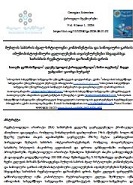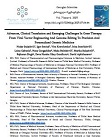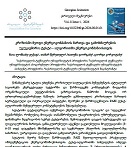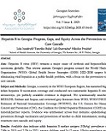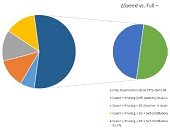Reverse shoulder arthroplasty for treatment of proximal humeral fractures: Case report
Downloads
A proximal end fracture of the humeral bone is one of the often common fractures and ranks third in terms of frequency (after a fracture of the hip and forearm). Due to the fact that the shoulder joint is one of the complex joints in the human body, the incorrectly selected method of treating an intraarticular multi-fragmented fracture of the shoulder joint leads to unsatisfactory consequences in the postoperative period and a high degree of disability. As with other types of surgical interventions, osteosynthesis and arthroplasty of a multifractional fracture at the proximal end of the humeral bone are associated with a high degree of disability. The most common problem of them is the unsatisfactory function of the limb in the postoperative period, which leads to a deplorable consequence – a solid decrease in disability. Today there is no uniform rule that allows both the pros and cons of any treatment method to be determined during the operational period. The most effective methods in terms of results among the operational methods available today are osteosynthesis with a metal plate and screw, although today the trend in developed countries around the world is the tendency to arthroplasty of the upper end of the shoulder joint in the acute period of multifractional fracture, which ensures the activation of the disease in the early stages of surgery and the relieve of pain syndrome. This particular case study describes the clinical case presentation, diagnosis, management, and outcome of a 72-year-old patient, who had a multifragmentary fracture of the proximal end of the humerus that underwent osteosynthesis with a locking plate and screws, However, in a few months, avascular necrosis of the proximal end of the shoulder was formed and it became necessary to undergo endoprosthesis of the shoulder joint with a reverse endoprosthesis.
Downloads
Ana Mata-Fink [et al.] Reverse shoulder arthroplasty for treatment of proximal humeral fractures in older adults - 2013. PMID: 24246529, DOI: 10.1016/j.jse.2013.08.021
Bell, J.-E. Trends and variation in incidence, surgical treatment, and repeat surgery of proximal humeral fractures in the elderly / J. E. Bell, B. C. Leung, K. F. Spratt [et al.] // J. Bone Joint. Surg. Am. – 2011. – N 93 (2). – P. 121–131. – DOI: 10.2106/JBJS.I.01505.
Boons, H. W. Hemiarthroplasty for humeral four-part fractures for patients 65 years and older: a randomized controlled trial / H. W. Boons, J. H. Goosen, S. van Grinsven [et al.] // Clin. Orthop. Relat. Res. – 2012 Dec. – N 470 (12). – P. 3483–3491. – Epub 2012 Aug 16.
Fjalestad, T. Surgical treatment with an angular stable plate for complex displaced proximal humeral fractures in elderly patients: a randomized controlled trial / T. Fjalestad, M. O. Hole, I. A., Hovden [et al.] // J. Orthop. Trauma. 2012. – N 26. – P. 98–106. – DOI: 10.1097/BOT.0b013e31821c2e15.
Olerud, P. Hemiarthroplasty versus nonoperative treatment of displaced 4- part proximal humeral fractures in elderly patients: a randomized controlled trial / P. Olerud, L. Ahrengart, S. Ponzer [et al.] // J. Shoulder Elbow Surg. - 2011 Oct. – N 20(7). – P. 1025–33. – Epub 2011 Jul 23.
Copyright (c) 2023 GEORGIAN SCIENTISTS

This work is licensed under a Creative Commons Attribution-NonCommercial-NoDerivatives 4.0 International License.





